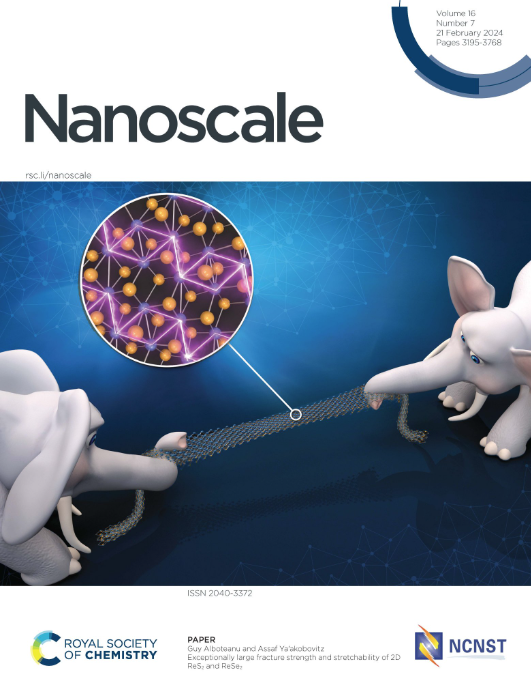通过纤维素纳米晶增强异质结构增强机械性能的竹材激发各向异性水凝胶
IF 5.8
3区 材料科学
Q1 CHEMISTRY, MULTIDISCIPLINARY
引用次数: 0
摘要
由于各向异性材料具有复杂的结构和力学性能,因此模拟各向异性材料具有挑战性。在这项研究中,我们开发了仿生水凝胶,通过将纤维素纳米晶体(cnc)加入聚乙二醇二丙烯酸酯(PEGDA)水凝胶中来复制竹子的各向异性特征。碳纤维的加入显著提高了材料的机械强度,0.5%的碳纤维浓度使材料的模量从110 kPa提高到208 kPa,提高了1.9倍。利用cnc掺杂区域模拟竹子的维管束,未掺杂区域代表薄壁组织,制备了仿生各向异性水凝胶。这些水凝胶表现出明显的各向异性,轴向模量超过径向模量,成功地证明了各向异性材料的产生。该方法还成功地应用于聚丙烯酸(PAA)水凝胶,进一步突出了其通用性。各向异性仿生水凝胶在不同方向表现出明显的机械传感性能,轴向灵敏度是径向灵敏度的1.36倍。这种可推广的方法为开发其他各向异性材料提供了有价值的见解。本文章由计算机程序翻译,如有差异,请以英文原文为准。
Bamboo-Inspired Anisotropic Hydrogels with Enhanced Mechanical Properties via Cellulose Nanocrystal-Reinforced Heterostructures
Mimicking anisotropic materials is challenging due to their complex structural and mechanical properties. In this study, we developed biomimetic hydrogels that replicate the anisotropic characteristics of bamboo by incorporating cellulose nanocrystals (CNCs) into polyethylene glycol diacrylate (PEGDA) hydrogels. The inclusion of CNCs significantly enhanced the mechanical strength, with a 0.5% CNCs concentration increasing the modulus by 1.9 times, from 110 kPa to 208 kPa. By utilizing CNC-doped regions to mimic the vascular bundles of bamboo and the undoped regions to represent the parenchyma tissue, we created biomimetic anisotropic hydrogels. These hydrogels displayed pronounced anisotropy, with the axial modulus exceeding the radial modulus, successfully demonstrating the creation of anisotropic materials. This method was also successfully applied to polyacrylic acid (PAA) hydrogels, further highlighting its versatility. These anisotropic biomimetic hydrogels exhibit distinct mechanical sensing properties in different directions, with the axial direction being 1.36 times more sensitive than the radial direction. This generalizable approach offers valuable insights for developing other anisotropic materials.
求助全文
通过发布文献求助,成功后即可免费获取论文全文。
去求助
来源期刊

Nanoscale
CHEMISTRY, MULTIDISCIPLINARY-NANOSCIENCE & NANOTECHNOLOGY
CiteScore
12.10
自引率
3.00%
发文量
1628
审稿时长
1.6 months
期刊介绍:
Nanoscale is a high-impact international journal, publishing high-quality research across nanoscience and nanotechnology. Nanoscale publishes a full mix of research articles on experimental and theoretical work, including reviews, communications, and full papers.Highly interdisciplinary, this journal appeals to scientists, researchers and professionals interested in nanoscience and nanotechnology, quantum materials and quantum technology, including the areas of physics, chemistry, biology, medicine, materials, energy/environment, information technology, detection science, healthcare and drug discovery, and electronics.
 求助内容:
求助内容: 应助结果提醒方式:
应助结果提醒方式:


